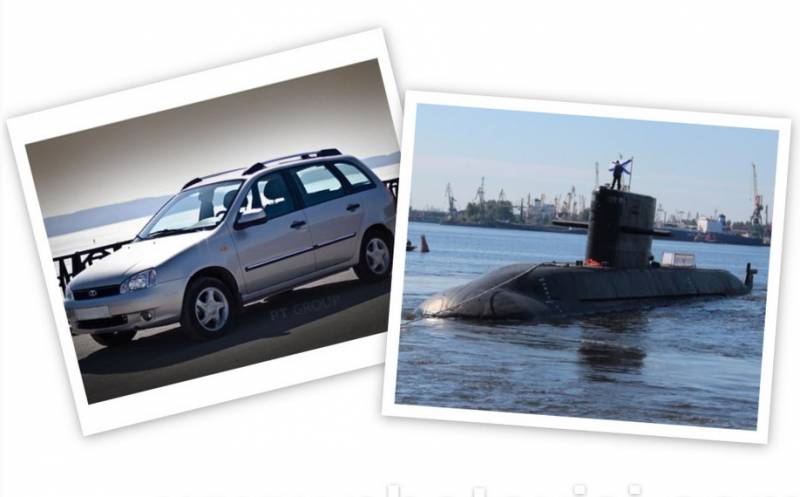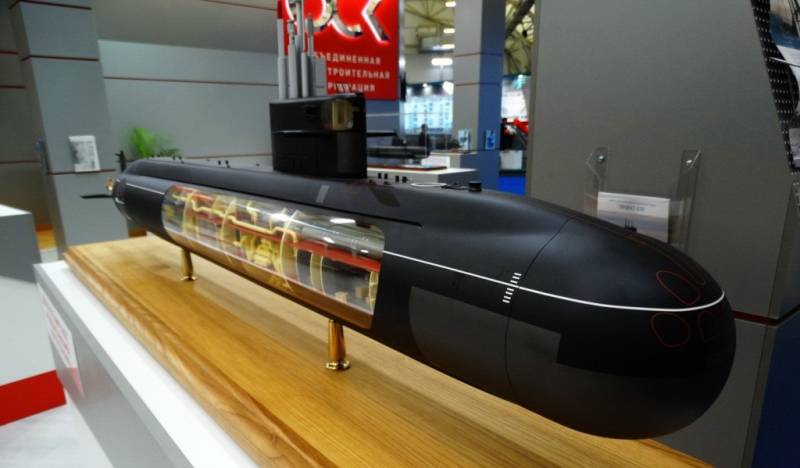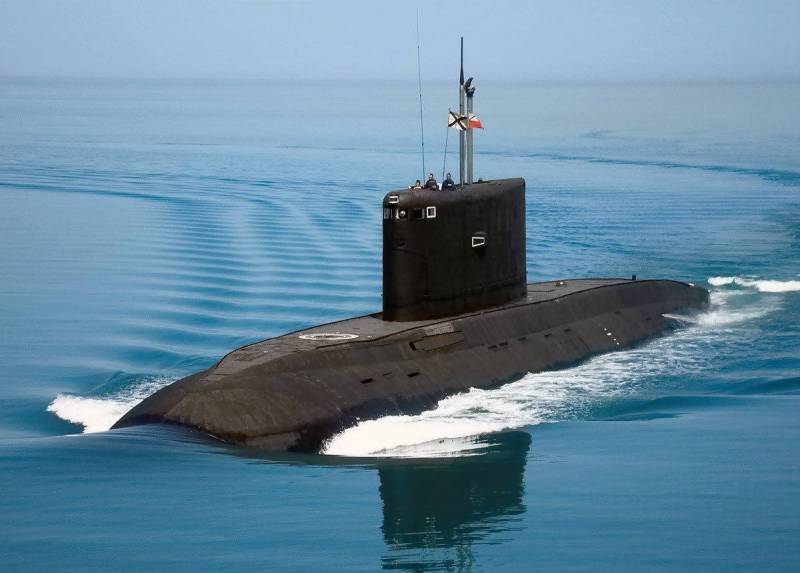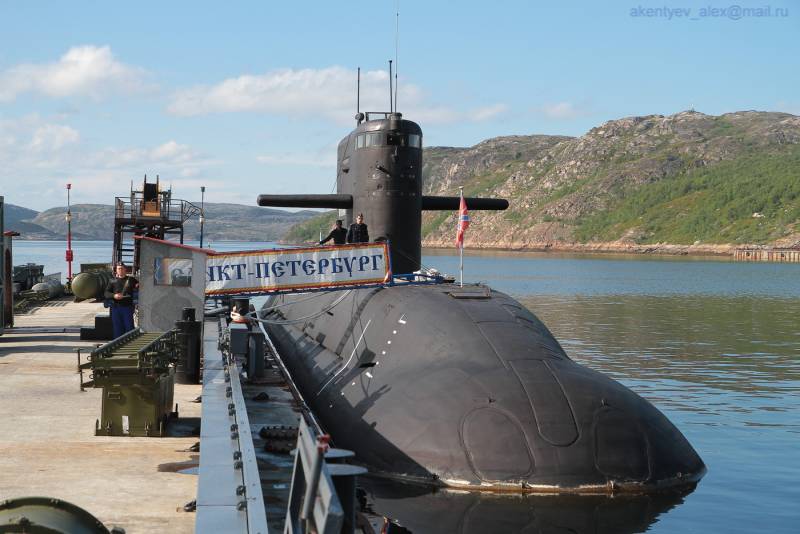Not every "Kalina" - "Lada"
But - in order.
The association "AvtoVAZ" with "Ladas" in general and "Kalins" in particular, everything is more or less decent. They are. Produced, purchased, and the issue of compliance with world standards is not our topic now.
We are interested in "Lada" and "Kalina" from the USC corporation, that is, the United Shipbuilding Corporation, which far exceeds VAZ in terms of scope and power. But with the new "Kalina" at USC so far not everything is so rosy, and it exists only in layouts.
As for our diesel-electric submarines, which should replace the once magnificent, but today obsolete "Varshavyanka" - here everything is somewhat more complicated.
"Varshavyanka", which then potential opponents dubbed "Black Hole", at one time was just a breakthrough ship. In the 80s of the last century. Today it is just a very good ship. Considering the presence of more modern submarines in a number of countries, the situation is not the best, especially in the Baltic.
But back in the 90s of the last century, our command began to think about the fact that instead of "Varshavyanka" it was necessary to build something newer. So the project "Lada" went into development, a boat of the 4th generation, designed to replace the "Varshavyanka".
How is the fourth generation different from the third?
The main difference is VNEU, an air-independent power plant. It is thanks to her that the boat should not surface every 2-3 days to charge the batteries, which has a very positive effect on the stealth of the boat. The risk of detection in the surface position when charging batteries is the main problem of modern diesel-electric submarines, so VNEU, which allows you to stay under water without surfacing for up to 25-28 days, is a very significant plus to the combat capabilities of the boat.
The next generation of submarines is now produced by more than one country. Such submarines are in service with Brazil, Germany, Sweden, France, Japan, Spain. Recently there was information that a workable anaerobic plant was designed even in North Korea.
Russia is not in this list.
In general, there are four types of VNEU in the world: engines with external heat supply (Stirling), closed-cycle diesel engines, closed-cycle steam turbines, and power plants with electrochemical generators.
Two options are being considered for use in submarine power plants: a Stirling engine and an electrochemical generator.
The Swedes use VNEU based on the Stirling engine in their boats, the Germans preferred the EHG. Our KB "Rubin" began work in the direction of ECH. The planning of the boat and the plant began at the same time.
The boat (expected and expedient) was taken up by the author of "Varshavyanka" Yuri Kormilitsyn. And he, as expected, developed the boat.

But with VNEU problems began. The development began to slip openly. This was evident in the numerous reports of how far our developers have progressed in the work, and how promising the development is.
And VNEU never appeared.
The logical result was the completion of the lead boat of Project 677 without VNEU ... after "only" 13 years from the moment of laying. And in the end, the B-585 "St. Petersburg" is a frank "don’t understand what." The boat was transferred to the Northern Fleet, where various tests seem to be carried out with it.
The former commander-in-chief of the Russian Navy, Vladimir Vysotsky, signed a verdict on the boats of the series (and at the same time resignation to himself), responding very sharply both about the first boat of the 677 project, and about the entire project as a whole:
We can agree that Lada is the next step compared to Varshavyanka. The boat is smaller, quieter, a huge number of new developments in electronic equipment, a new hydroacoustic system, new antennas, and a new navigation system have been applied on it.
Outside, the hull is covered with a multi-layer rubberized coating "Lightning", four centimeters thick, which makes the boat even more inaudible.
"Lada" is smaller than "Varshavyanka" by a third in size, the crew was reduced from 56 to 35 people due to automation, and the set of weapons was kept at the level of "Varshavyanka", up to 18 cruise missiles "Caliber", anti-ship missiles "Onyx" or torpedoes of caliber 533 millimeter launched from torpedo tubes.
And the cherry on top is 22 knots underwater. An excellent indicator.
Alas ... but none of this happened. Advantages, innovations - everything was crossed out by a crude and unsuccessful power plant.
Not only did VNEU fail, but the submarine with a conventional power plant also did not show anything remarkable. The propulsion motors consumed excess power, draining the batteries. Accordingly, the boat had to surface more often in order to charge them.
One could understand Vysotsky. Billions of rubles and more than ten years wasted ...
But the problem of VNEU was worked on not only at Rubin. Since Soviet times, the Malakhit Design Bureau from Leningrad / St. Petersburg has been working on its own initiative. There, as the basis for the project, they chose the principle of a closed-type gas turbine plant, where the temperature of the working medium - air, rises in a heater with an external heat supply. And where there is no traditional combustion chamber. But at the same time, the heat for the operation of the turbine is generated by burning liquid oxygen.
The reports of Malachite from year to year are as optimistic as that of Rubin. But there was no installation at the output, and no. It is not very correct to demand results from "Malachite", since all work is carried out on an initiative basis, that is, at its own expense.
But how much money has already been spent on VNEU? It is not surprising that this abbreviation evokes unpleasant thoughts for many in the Ministry of Defense and the Government (in the field of financial management). And this is quite justified, since we are talking about billions of rubles.
Malakhit is finishing work on equipping a small boat P-450B with a displacement of 1400 tons of its own design. But this experimental setup will not be able to provide even such a frankly small boat with a speed of more than 10 knots.
Optimistic? Yes. Because behind a small, efficient installation, one should expect a large one, capable of accelerating a boat with a displacement of 3 tons to the required speeds.
In KB "Rubin", it seems, do not sit idly by. After the unfinished Lada was sent into exile to the Northern Fleet in 2010, work on the creation of the VNEU continued.
In the middle of the last decade, it even came to testing a prototype at a coastal stand. Then the corresponding statements were made that the coastal test stands would be enough for testing - the boat would not have to be built. Saving…
However, tests have shown that the installation never delivers the required power. Work on the stands was going on, different modes of settings were tried. But this did not lead to anything, and the Ministry of Defense in 2017 was finally disappointed. That is, it stopped funding the work.
Can our military department be blamed for this? I think no. Spending huge sums of money on a very dubious result is not exactly what it was created for.
Not so long ago, at the beginning of autumn, the head of the USC, Alexei Rakhmanov, a man who is generally known for his, shall we say, very optimistic vision of what is happening, said that work on the creation of the fifth generation non-nuclear submarine Kalina was in full swing.
"At full speed" - this means that in the second half of the decade, it is tentatively planned to lay the 777A submarine. That is - "Kalina". In this case, the boat will be built according to the revised project and will be of low tonnage.
But this is where questions arise for Rakhmanov.
The head of the USC said that "work is going on on an initiative basis." This is understandable: there is no more money in the budget of the Ministry of Defense for unpromising developments and experiments. But forgive me, because it is the presence of VNEU on board the boat that makes it the next generation boat.
No installation - no boats of the fourth generation. Just take it and name it ... Strange PR move. Very strange. If the USC believes that simply building a boat to the next generation will frighten opponents or increase its combat effectiveness ...
Yes, indeed, a strategy in the style of AvtoVAZ.
But why did Kalina suddenly lose so much weight? Was there a submarine project with approximately the same parameters as the Varshavyanka, with the same armament, and suddenly - a low-tonnage submarine?
In general, judging by the confident tone of Rakhmanov, VNEU will nevertheless appear at Kalina. But it will be "another" VNEU, "malachite". Small, designed for a low-tonnage boat of 1400 tons. If so, then yes, Mr. General has a reason to talk about the achievements of the USC.
But this is the same as wanting to buy Kalina, but you are persistently offered Oka ...
Obviously, there is no more hope for Rubin. The "Rubinites" are completely entangled in physical processes and cannot make at least something sane out of their installation. Their electrochemical generator is a very complicated thing.
Yes, the generator generates hydrogen from diesel fuel. This process is called reforming. Everything is good here, everything is beautiful here. Ugly with a huge amount of heat that is released during reforming. You have to put it somewhere, somehow dispose of it ... And Rubin has definitely not coped with this yet.
And here we have a “Kalina”. The boat is of the fifth generation at once, which will almost begin to be built in 8-10 years.
The situation is more than strange.
It is strange, first of all, because this jump from a boat of the third generation directly to the fifth is not entirely clear and understandable. To begin with, I would like to understand what is the difference between this fifth generation and all the others.
And here is just beauty. The characteristics of "Kalina" were not disclosed. It is clear that, on the one hand, for reasons of secrecy, on the other, it is possible that those who should have disclosed them do not yet know.
But if we talk about the rest of the world, then no one has yet a formed understanding of what the next generation boats should be like.
Here, of course, everything is not like everyone else's. Nobody knows yet what these boats should be, but we are already going to build them.
Some "experts" have recently started blowing bubbles about the fact that "fifth generation boats should be participants in network-centric wars," and stuff like that. I hope, and very strongly, that this cup will pass us by. Simply because we (and not only we - no one has yet) such equipment that could fully provide digital communication with a submarine in a submerged state.
There are no other considerations for the fifth generation yet.
So, perhaps, we should agree with those who say that Kalina is not the fifth generation, but an ordinary boat of the fourth generation (if there is a VNEU after all). There will be no VNEU - the third.
But when you really want to show off, then everything is possible. The third generation boat can be called the fifth. Let the enemy break his head, what we stuffed there, right? It is possible (and necessary!) To shoot a video showing how such a small-tonnage boat very quietly and imperceptibly approaches the enemy shores and releases deadly "Calibers" ...
Rollers are in trend now. "Petrels", "Poseidons", submarines of the fifth generation ...
The boat of the fourth generation, that is, "Lada", we did not get the word "absolutely". Hence the next boat, even if not "Lada", but immediately "Kalina", simply had no right to be called a boat of the fourth generation. Well, I had to come up with something new and fresh.
The main thing is not Priora, it's already good. But I would really like the boat to be, and be quiet, comfortable and deadly. Well, our business with diesel-electric submarines looks very ugly.
Maybe, as Putin suggested with space - by taking the mind?




Information